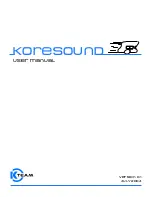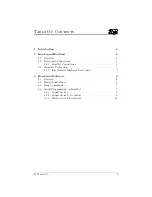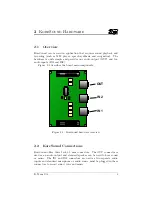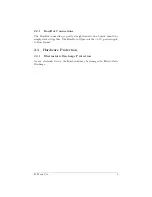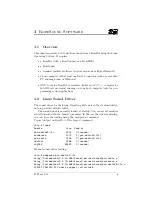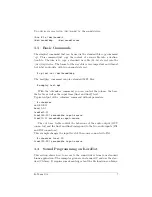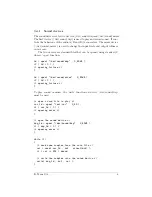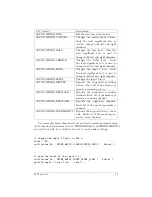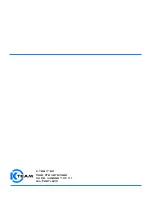
Two devices is created in ’/dev/sound’ by the sound driver:
/bin # ls /dev/sound/*
/dev/sound/dsp
/dev/sound/mixer
3.3
Basic Commands
The simplest command that can be used is the standard file copy command
’cp’. This command just copy the content of a source file into a destina-
tion file. The idea is to copy a standard wave file (16-bit, stereo) into the
’/dev/dsp’ device. The format of the wave file is very important and it must
be 16-bit audio data with two channels (stereo).
~ # cp test.wav /dev/sound/dsp
The ’madplay’ command can play standard MP3 files.
~ # madplay test.mp3
With the ’cutemixer’ command, you can control the volume, the bass,
the treble as well as the input lines (line1 and line2) level.
Typical output of the ’cutmixer’ command without paramters:
~ # cutemixer
vol(90:90)
bass(0:0)
treble(0:0)
line1(50:50) recordable input-source
line2(0:0) recordable input-source
The vol, bass, treble control the behaviour of the audio output (OUT
connector) and the line1 and line2 correspond to the two audio inputs (IN1
and IN2 connectors).
This example changes the input level of the source connected to IN1.
~ # cutemixer line1 50
line1(50:50) recordable input-source
3.4
Sound Programming on KoreBot
This section shows how to access to the sound driver from your standard
Linux application. The examples given are in standard C and use the stan-
dard C library. It requires some knowledge about the file functions on Linux.
K-Team S.A.
7

